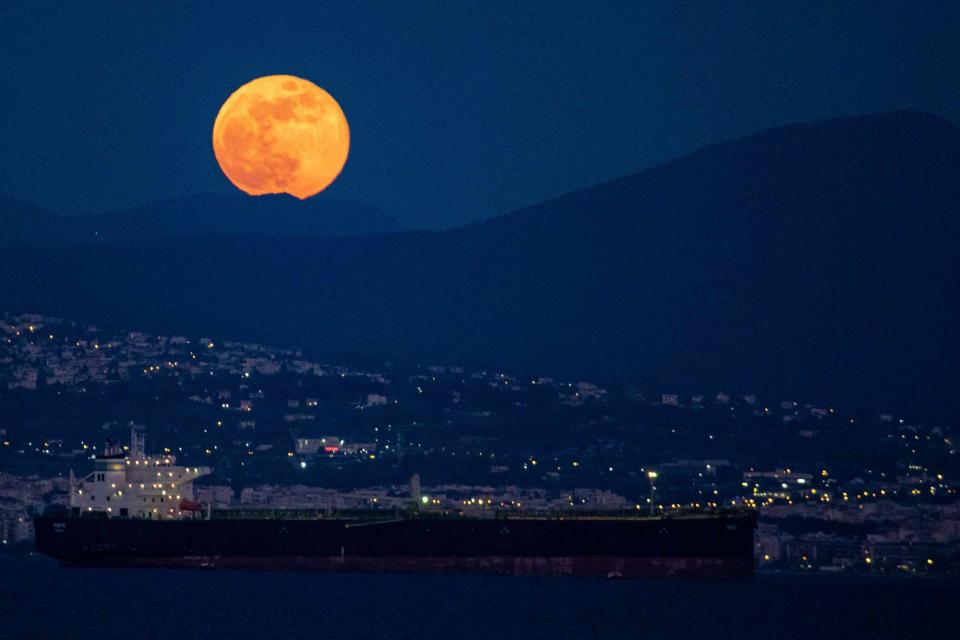You Can See a 'Flower Moon' in the Sky Tonight — Here's How to Spot It
It'll be visible all night long.

NurPhoto/Getty Images
Super Flower Moon of May 2020 as seen rising over the Aegean Sea and Thessaloniki city in Greece from KalochoriOnce a month or so, we're treated to the lovely view of the full moon. And on Friday night, there's going to be a double feature. Not only is there a full "Flower Moon," as this specific full moon is called, but there's also a penumbral lunar eclipse — if you're in the Eastern Hemisphere, that is. Unfortunately, you won't be able to see the eclipse from North America, but North Americans will still enjoy views of the full moon.
Here's everything you need to know.
What Is a Flower Moon?
Each of the year's full moons has been given a name by The Old Farmers' Almanac, based on Native American names for the moon, as well as European and colonial American names. May's moon is called the flower moon as many flowers bloom across North America in May. According to the Almanac, the name is likely derived from Algonquin and Dakota traditions.
When Can I See the Flower Moon?
The Flower Moon will rise at 6:59 p.m. EDT on May 5 and set at 5:39 a.m. EDT on May 6. Between these hours, you'll be able to see the full moon in the night sky, weather permitting. That's actually why we won't be able to see the penumbral lunar eclipse — it happens between 11:15 a.m. and 3:32 p.m. EDT, which is before the moon rises.
What Is a Penumbral Lunar Eclipse?
A penumbral lunar eclipse occurs when the moon moves into the outer limits of the Earth's shadow, which is called the penumbra. It means that the moon doesn't turn completely dark, as it does in a total lunar eclipse, but rather just dims.
When Is the Next Full Moon?
The next full moon is the Strawberry Moon, which occurs on June 4, 2023.
When Is the Next Lunar Eclipse?
The next lunar eclipse will happen on October 28. This will be a partial lunar eclipse, when part of the moon will enter the umbra, or the Earth's full shadow. In North America, it will only be visible in the Northeast and Mid-Atlantic. The next total lunar eclipse occurs on March 13, 2025 — that eclipse will be visible across the majority of North America.
For more Travel & Leisure news, make sure to sign up for our newsletter!
Read the original article on Travel & Leisure.

